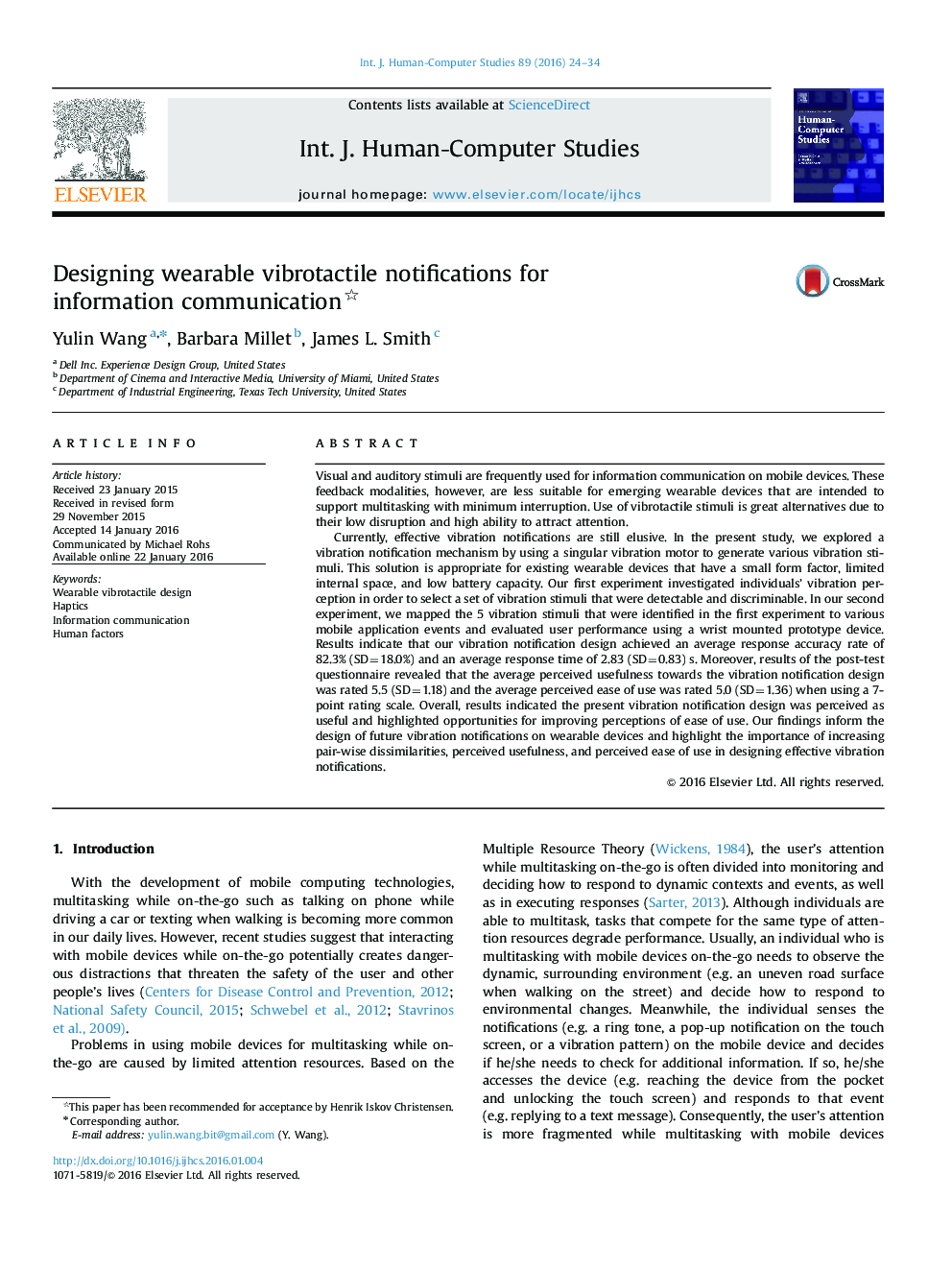| Article ID | Journal | Published Year | Pages | File Type |
|---|---|---|---|---|
| 6861045 | International Journal of Human-Computer Studies | 2016 | 11 Pages |
Abstract
Currently, effective vibration notifications are still elusive. In the present study, we explored a vibration notification mechanism by using a singular vibration motor to generate various vibration stimuli. This solution is appropriate for existing wearable devices that have a small form factor, limited internal space, and low battery capacity. Our first experiment investigated individuals' vibration perception in order to select a set of vibration stimuli that were detectable and discriminable. In our second experiment, we mapped the 5 vibration stimuli that were identified in the first experiment to various mobile application events and evaluated user performance using a wrist mounted prototype device. Results indicate that our vibration notification design achieved an average response accuracy rate of 82.3% (SD=18.0%) and an average response time of 2.83 (SD=0.83)Â s. Moreover, results of the post-test questionnaire revealed that the average perceived usefulness towards the vibration notification design was rated 5.5 (SD=1.18) and the average perceived ease of use was rated 5.0 (SD=1.36) when using a 7-point rating scale. Overall, results indicated the present vibration notification design was perceived as useful and highlighted opportunities for improving perceptions of ease of use. Our findings inform the design of future vibration notifications on wearable devices and highlight the importance of increasing pair-wise dissimilarities, perceived usefulness, and perceived ease of use in designing effective vibration notifications.
Related Topics
Physical Sciences and Engineering
Computer Science
Artificial Intelligence
Authors
Yulin Wang, Barbara Millet, James L. Smith,
